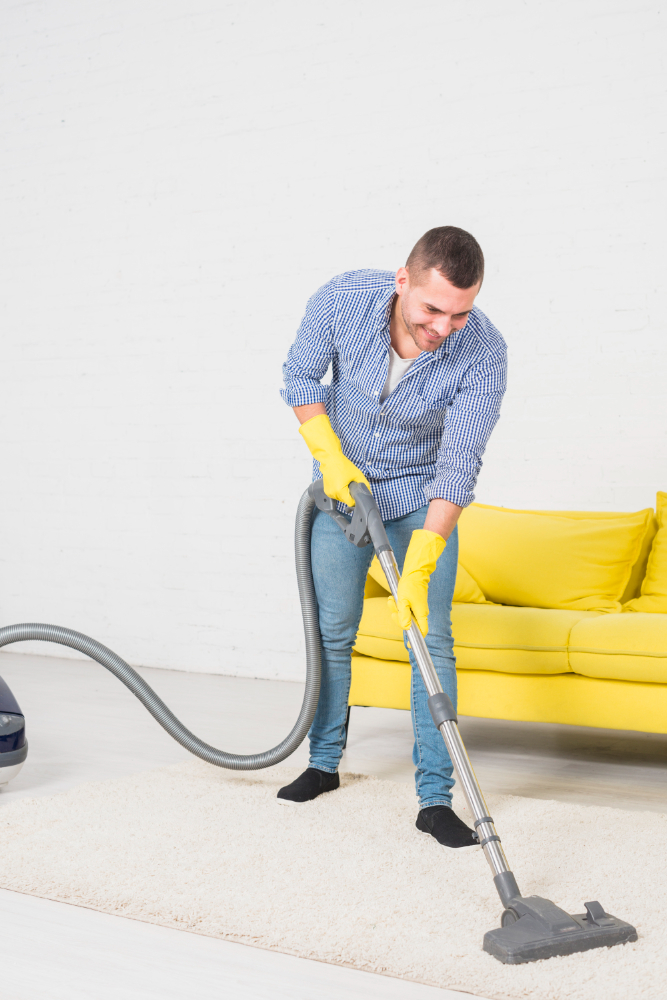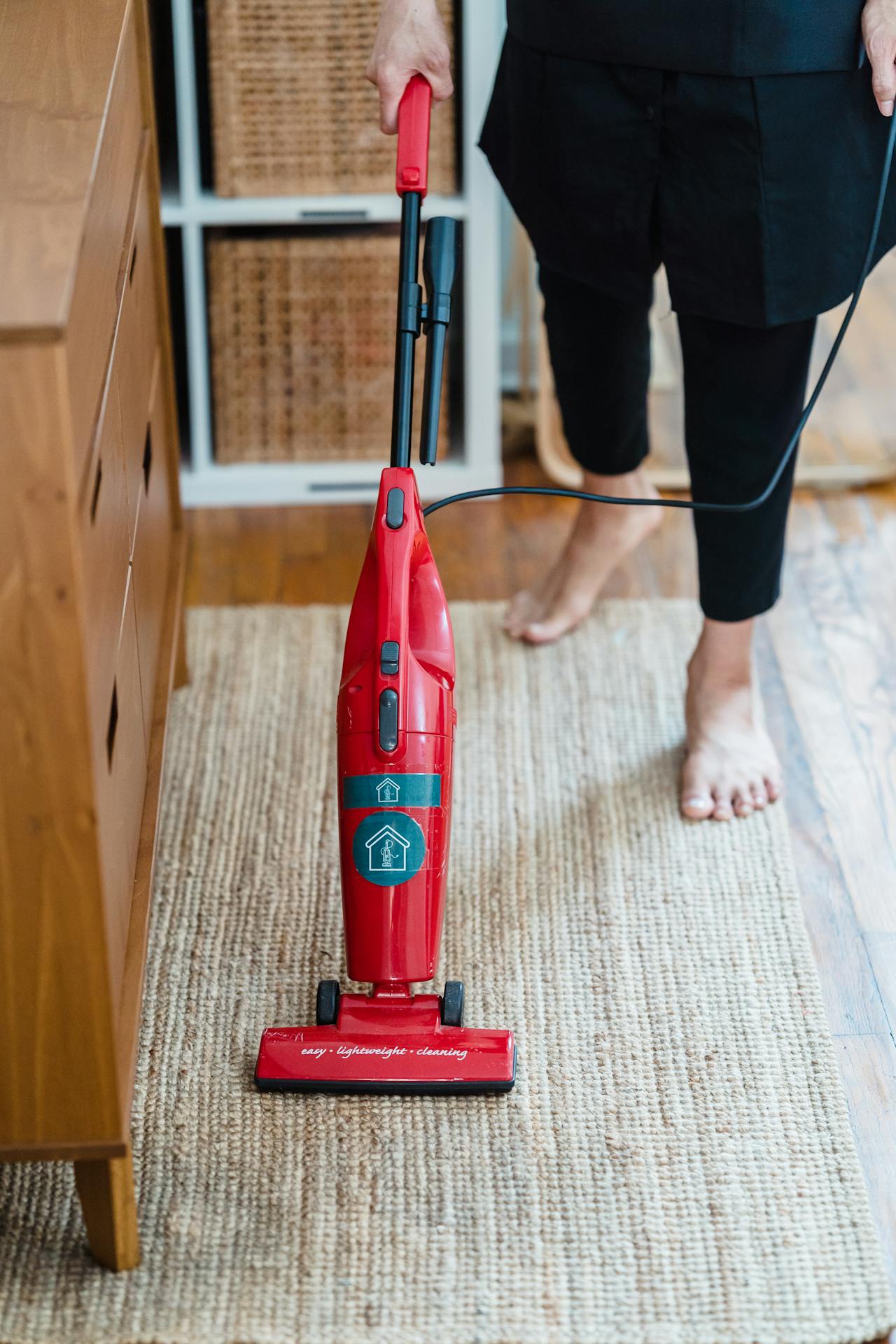Carpet Care
Carpet may be one of the easiest types of flooring to maintain. Learn how to keep your new carpet looking great over time with a simple care program. Easy, preventative maintenance will keep your carpet looking great over time.
Do not track dirt inside
Placing walk-off mats outside all entrances will help absorb soil and moisture and trap excessive dirt, sand, grit, oil, asphalt, or driveway sealer that might otherwise be tracked into the home. Clean mats on a regular basis (or sooner, when they need it) so they don’t become sources of soil themselves.
Use a quality pad
A good carpet pad not only gives better resilience and comfort underfoot, it can extend the life of your carpet, especially on stairs. Because some carpets carry warranties with specific density and thickness requirements, be sure and review your warranty before purchasing your pad. Explore the different varieties of carpet pads available.
Occasionally move heavy furniture
Moving your furniture on occasion won’t just renew the feel of your room, it will also help avoid excessive pile crushing. Also consider using carpet protectors under the legs of tables, chairs, and other furniture to help distribute the weight. Damage can occur if you use chairs or appliances with rollers or casters without a chair pad designed specifically for carpet.
Protect carpet when moving furniture
When moving heavy wheeled furniture (pianos, buffets, etc.), prevent damage by placing a protective barrier of heavy cardboard or plywood between the wheels and the carpet.
Clean your area rugs
If you use area rugs on your carpet, be sure to clean them regularly, and make sure you clean and restore the pile of the carpet underneath as well. Also, be sure to check area rugs for colorfastness before placing them on carpet because the color in some rugs may bleed through. After cleaning your carpet, allow it to dry completely before replacing rugs.

Reduce periods of direct sunlight
Vacuum frequently for long-term beauty
The most important step in caring for your carpet is vacuuming it thoroughly and frequently, particularly in high-traffic areas. Walking on soiled carpet allows the soil particles to work their way below the surface of the pile where they are far more difficult to remove and can damage the carpet fibers. Frequent vacuuming removes these particles from the surface before problems occur. For rooms with light traffic, vacuum the carpet traffic lanes twice weekly and the entire area once weekly. In areas with heavy traffic, vacuum the carpet traffic lanes daily and the entire area twice weekly. Up to three passes of the machine will suffice for light soiling, but five to seven passes are necessary for heavily soiled areas. Change the vacuuming direction occasionally to help stand the pile upright and reduce matting.
Extend the life of your carpet with a quality vacuum
An inexpensive machine may remove surface dirt but will not effectively remove the hidden dirt and particles embedded in the pile. Invest in a good vacuum cleaner to get the dirt you cannot see and prolong the beauty and life of your carpet. To ensure that your vacuum will conform to the highest industry standards, make sure that your vacuum cleaner is certified through the Carpet and Rug Institute (CRI) Seal of Approval/Green Label Vacuum Cleaner Program.
Select the best vacuum for your type of carpet
Manufacturers recommend not using vacuums with a rotating brush or combination beater/brush bar that agitates the carpet pile and mechanically loosens soil for removal. Carpet with thick loop pile construction, particularly wool and wool-blend styles, may be sensitive to brushing or rubbing of the pile surface and may become fuzzy. In addition, shag (or cabled) styles with long pile yarns tend to wrap around the rotating brushes causing damage to the yarn. For these products, Atlanta Flooring Design Center recommends a suction-only vacuum or a vacuum with an adjustable brush lifted away from the carpet, so it does not agitate the pile. Be sure to test a vacuum with a beater/brush bar in an inconspicuous location before regular use, to make sure it does not produce excessive fuzzing.
No carpet is absolutely stain proof
Some carpets have stain resistant treatments that improve your ability to clean stains, but not prevent them. Similarly, carpets with soil resistant treatments reduce the rate of soiling, but all carpets require regular care and maintenance.
Stains and soil
Most stain complaints are actually soil related. For example, many sugar-based spills, such as soft drinks and coffee, leave a sugar residue after removal. This sticky residue readily attracts soil from ordinary shoe traffic, and the resulting discolored area appears to be a stain.
The same thing happens when spills are cleaned with a detergent solution and the area is not sufficiently rinsed with plain water, leaving a sticky detergent residue. It is important to rinse thoroughly with water and blot dry after removing any spill.
Spot and spill removal
No carpet is stain proof, but since many are stain resistant, you have time to act. Remove as much of food spills as possible by scraping the carpet gently with a spoon or a dull knife. Absorb wet spills quickly by blotting repeatedly with white paper or white cloth towels. Always blot; never rub or scrub abrasively, as a fuzzy area may result. When blotting, work from the outer edge in toward the center of the spot to avoid spreading the spill. Remove the stain by using a recommended cleaning item for your carpet. Rinse the cleaned carpet area with water to remove detergent residue that may become sticky and cause rapid re-soiling. Absorb any remaining moisture by placing several layers of white towels over the spot and weighing them down with a heavy object. This step is necessary even when the carpet does not seem particularly damp.
Carpet Cleaning
Protect your carpet color
In addition to frequent vacuuming, it’s important to clean your carpet on a regular basis. Atlanta Flooring Design Center offers state of the art carpet cleaning that will remove the oily, sticky soil that vacuums can’t take out, and will help keep your carpet looking great over time. When it is time to schedule your carpet cleaning, call Atlanta Flooring Design at 770-476-8306.
Cleaning systems target the soils that result from cooking vapors, air pollution, and tracked-in dirt. The particles of oily soil deposited on carpet fibers can cause gradual but significant dulling of colors. The color is not lost but is hidden under the film. If this type of soil can accumulate, it begins to attract and hold the dry soil.
Get on a cleaning schedule
If carpet is cleaned before it becomes too unsightly, the cleaning chore will be easier and more successful. Carpet in a typical household should be cleaned every 12 to 18 months, depending on the number of residents and amount of activity.
Choosing the proper cleaning system is important. Some systems may leave residues which accelerate re-soiling and defeats the whole purpose of cleaning.

Hot water extraction
Research indicates that the hot water extraction system provides the best capability for cleaning. This system is commonly referred to as “steam cleaning,” although no steam is generated. The process consists of applying a cleaning agent into the carpet pile and using water in the extractor to recover the used solution and soil. This can be done from a truck-mounted unit outside the home with only the hose and wand brought inside or by a portable system brought into the home.
Manufacturer warranties require that the homeowner be able to show proof of periodic cleaning by hot water extraction (commonly called “steam” cleaning) by a professional cleaning service or do-it-yourself system, using equipment that is certified under the Carpet and Rug Institute’s Seal of Approval program.
Professional advantages
Professional carpet cleaners are a great choice for your floor. Their cleaning equipment has more extraction power than the rental units available to individuals, and the carpet should dry more quickly. True professionals also understand the equipment, know the proper cleaning agents for the situation at hand, and recognize the differences in fibers and carpet construction.
